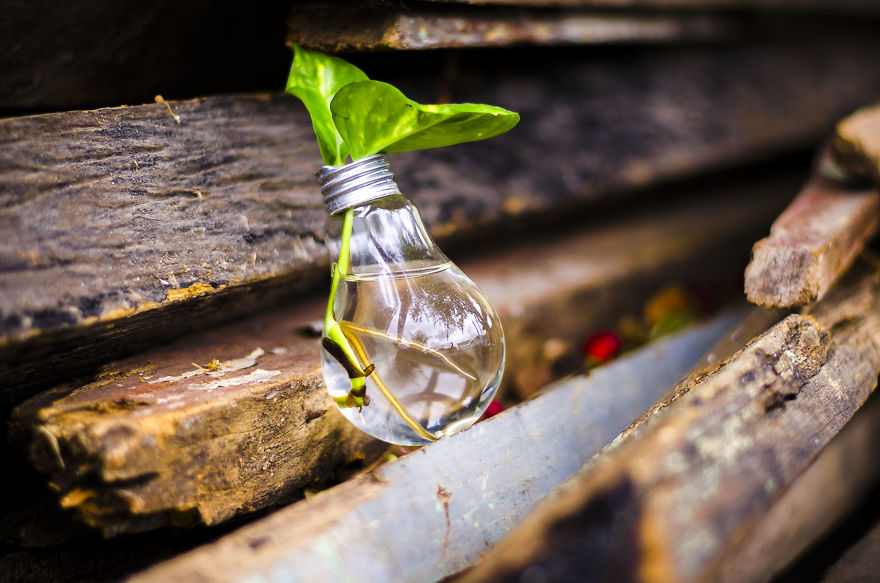I Spent Hours Finding The Best Recycling Facts For You.
Recycling is something many of us are conscious of, but not all of us are doing it right. There are items that might look recyclable but aren’t…and others that are being reused in innovative ways.
Recycling properly can dramatically reduce the amount of waste that ends up in landfill, and is something we can all do in our daily lives.
Here are a few recycling facts you didn’t know, and tips to recycle more effectively:
Coffee Cups
Disposable coffee cups may look recyclable, but in order to be waterproof they are usually lined with polyurethane. This thin, plastic material cannot be easily removed from the cardboard making it extremely difficult to recycle. If we all stopped using take-away coffee cups and replaced them with a reusable option it would make a big difference to the planet.
Up to 47% of the greenhouse gas emissions relating to coffee cups could be reduced, plus a minimum of 65% reduction in water use, and a 91% decrease in landfill.
There are a number of companies offering reusable coffee cups and some cafes will even give you a discount when you BYO your own cup! If you are forgetful, a biodegradable coffee cup could be the next best option.
Drinking Straws
While drinking straws ARE technically recyclable, their slim size often sees them fall through the cracks at recycling facilities. When plastic drinking straws are not disposed of properly they can end up in the ocean. This can have a detrimental impact on both wildlife and the natural environment. With Australians using roughly 10 million single-use plastic straws each day, it is easy to see how dire this could be for our ocean animals.
Because there are so many obstacles to effectively recycling plastic straws, it is best to avoid them if you can. You can request your drink to be straw-free, or consider other alternatives such as metal, glass, or paper.
Phones and Gadgets
e-Waste, or electronic waste, should not be disposed of in the normal way as it will contain hazardous materials. Your phones, computers, and tablets can actually be recycled as they contain reusable resources such as zinc, copper, nickel, and tin. However, this doesn’t mean you can put them in your recycling bin, as they do need to be dealt with correctly.
You should check with your local council to learn how to dispose of e-waste correctly in your area. With over 34,000 mobile phones being sold in Australia each day, that is a lot of waste that could potentially end up contaminating our recycling depots or being underutilised in landfill.
Building Materials
Building materials can be big and bulky, but not all excess product has to end up in the tip. Demolition companies and builders are becoming more innovative and recycling a large proportion of materials.
One company doing this well is Capital Recycling, who have an exclusive concrete called Eco Concrete. This is made from crushed, cleaned, and screened building aggregates and has a variety of uses.
Other building materials can be reused including wood and bricks, and when you choose these types of products it can even save you money!
Recycling is something we can all do, but it has to be done right! Whether it is buying a reusable coffee cup, recycling your electronics correctly, reducing your straw usage, or looking at innovative building materials, you can make a difference.
Recycling is something many of us are conscious of, but not all of us are doing it right. There are items that might look recyclable but aren’t…and others that are being reused in innovative ways.
Recycling properly can dramatically reduce the amount of waste that ends up in landfill, and is something we can all do in our daily lives.
Here are a few recycling facts you didn’t know, and tips to recycle more effectively:
Coffee Cups
Disposable coffee cups may look recyclable, but in order to be waterproof they are usually lined with polyurethane. This thin, plastic material cannot be easily removed from the cardboard making it extremely difficult to recycle. If we all stopped using take-away coffee cups and replaced them with a reusable option it would make a big difference to the planet.
Up to 47% of the greenhouse gas emissions relating to coffee cups could be reduced, plus a minimum of 65% reduction in water use, and a 91% decrease in landfill.
There are a number of companies offering reusable coffee cups and some cafes will even give you a discount when you BYO your own cup! If you are forgetful, a biodegradable coffee cup could be the next best option.
Drinking Straws
While drinking straws ARE technically recyclable, their slim size often sees them fall through the cracks at recycling facilities. When plastic drinking straws are not disposed of properly they can end up in the ocean. This can have a detrimental impact on both wildlife and the natural environment. With Australians using roughly 10 million single-use plastic straws each day, it is easy to see how dire this could be for our ocean animals.
Because there are so many obstacles to effectively recycling plastic straws, it is best to avoid them if you can. You can request your drink to be straw-free, or consider other alternatives such as metal, glass, or paper.
Phones and Gadgets
e-Waste, or electronic waste, should not be disposed of in the normal way as it will contain hazardous materials. Your phones, computers, and tablets can actually be recycled as they contain reusable resources such as zinc, copper, nickel, and tin. However, this doesn’t mean you can put them in your recycling bin, as they do need to be dealt with correctly.
You should check with your local council to learn how to dispose of e-waste correctly in your area. With over 34,000 mobile phones being sold in Australia each day, that is a lot of waste that could potentially end up contaminating our recycling depots or being underutilised in landfill.
Building Materials
Building materials can be big and bulky, but not all excess product has to end up in the tip. Demolition companies and builders are becoming more innovative and recycling a large proportion of materials.
One company doing this well is Capital Recycling, who have an exclusive concrete called Eco Concrete. This is made from crushed, cleaned, and screened building aggregates and has a variety of uses.
Other building materials can be reused including wood and bricks, and when you choose these types of products it can even save you money!
Recycling is something we can all do, but it has to be done right! Whether it is buying a reusable coffee cup, recycling your electronics correctly, reducing your straw usage, or looking at innovative building materials, you can make a difference.





1
0